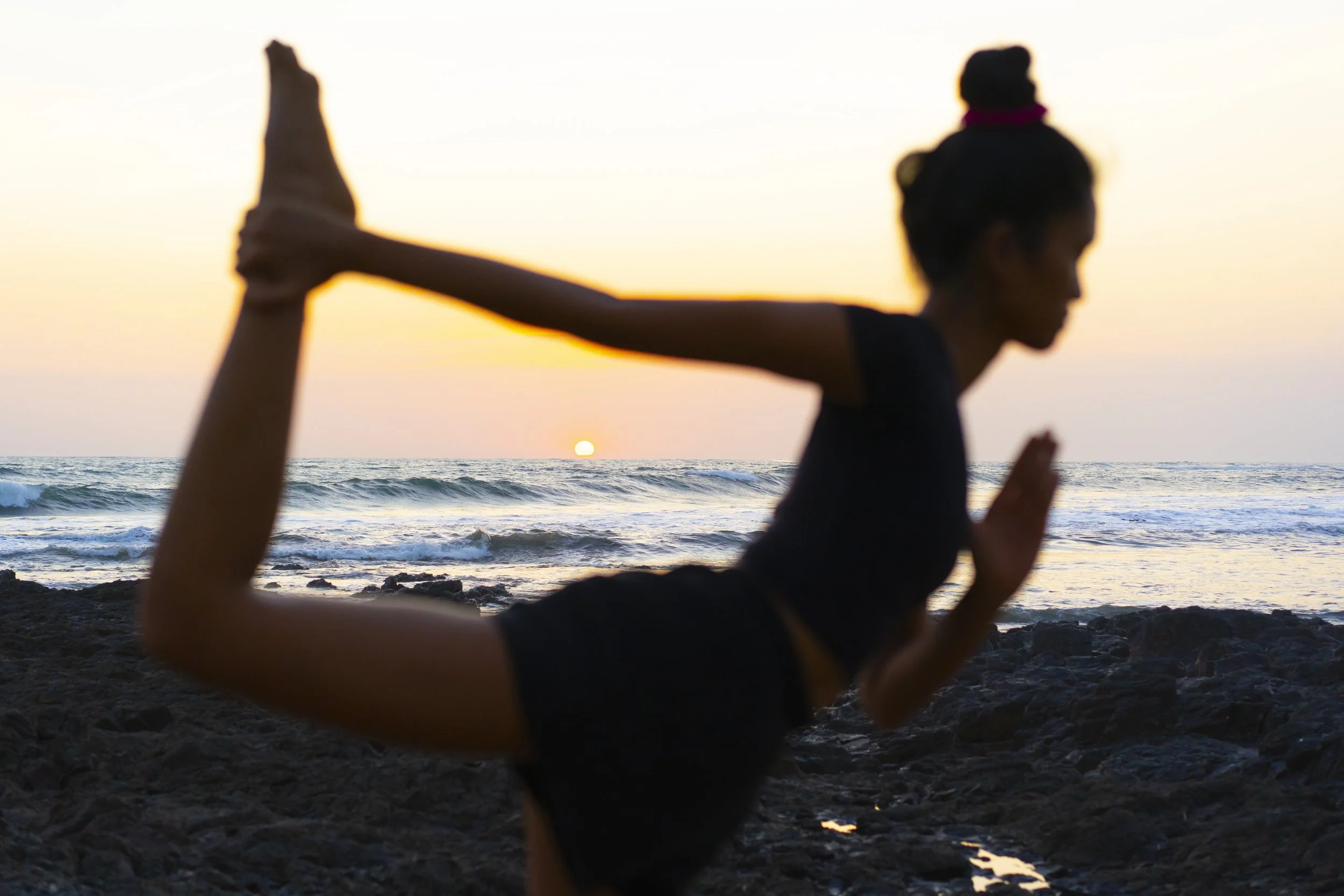Yoga for Surfers: 10 Postures to Improve Balance and Core Strength
Surf and yoga don’t have to be two separate practices — they’re the same rhythm expressed differently. Yoga builds strength, stability, and presence — everything a surfer needs when paddling out or dropping into a wave. Whether you’re a beginner catching whitewater or chasing barrels at The Boom, these 10 yoga poses will help you move with more control and confidence in (and out of) the water.
Why Yoga Helps Surfers
Balance & Stability
Yoga helps train the small stabilizing muscles in your ankles, hips, and core that keep you steady when standing on an unstable surface — like a surfboard. Through postures such as Warrior II, Tree Pose, and Chair Pose, you develop proprioception — your body’s ability to sense where it is in space. That translates directly into smoother takeoffs, stronger turns, and fewer wipeouts.
Core Strength & Paddling Power
Strong abdominals and lower back muscles are essential for paddling efficiency and maintaining good posture on your board.
Poses like Boat, Locust, and Plank build endurance in your core and shoulders, helping you paddle longer without fatigue and recover faster between sets.
Flexibility & Range of Motion
Tight hips, hamstrings, and shoulders can limit your surf technique. Yoga opens these key areas, allowing for more fluid pop-ups, quicker transitions, and graceful movement through the lineup. Over time, greater mobility also reduces the risk of overuse injuries common to surfers.
Breath Control & Calm Focus
One of the most underrated surf skills is your breath. Breathwork (pranayama) practiced in yoga trains you to stay calm and present, even when a wave tumbles you or a hold-down lasts longer than expected. When you can control your breathing, you conserve energy, extend your surf sessions, and make smarter split-second decisions in the water.
Mind–Body Awareness
Yoga teaches you to listen — to your body, your breath, and your environment. That awareness makes you more responsive to subtle changes in the ocean: shifting tides, sets forming on the horizon, and your own energy levels. Surfing becomes less about effort and more about harmony.
Mental Clarity & Confidence
Yoga cultivates patience and mental resilience. You learn to release frustration after missed waves, to reset your focus after a fall, and to approach challenges with curiosity instead of fear. Those same lessons carry beyond the mat and the surfboard — into every part of life.
10 Yoga Postures for Surfers
1. Downward-Facing Dog (Adho Mukha Śvānāsana)
Lengthens the spine, opens the shoulders, and stretches the hamstrings — perfect for improving paddling posture and supporting stronger pop-ups.
2. Plank Pose (Phalakasana)
Builds full-body stability and endurance for powerful paddling and steady take-offs.
3. Low Lunge (Anjaneyasana)
Increases hip flexibility and balance, helping you transition smoothly from crouch to stance.
4. Warrior II (Virabhadrasana II)
Strengthens the legs and core while improving focus and awareness — great for maintaining control during turns.
5. Chair Pose (Utkatasana)
Develops leg endurance and power, mimicking the strength needed to rise and stabilize on your board.
6. Boat Pose (Navasana)
Targets deep core muscles essential for paddling strength, balance, and alignment.
7. Crescent Lunge with Twist (Parivrtta Anjaneyasana)
Improves spinal rotation and balance — ideal for maintaining mobility through your upper body.
8. Eagle Pose (Garudasana)
Enhances coordination and focus while strengthening the ankles, knees, and hips for better stance control.
9. Locust Pose (Śalabhasana)
Strengthens the back, glutes, and shoulders to counteract paddling fatigue and support posture.
10. Seated Forward Fold (Paścimottānāsana)
Releases tight hamstrings and lower back tension, restoring flexibility after long surf sessions.
How to Integrate Yoga Into Your Surf Routine
Pre-surf: Do 10 minutes of dynamic yoga (planks, lunges, twists) to warm up your joints.
Post-surf: Focus on restorative poses and deep breathing to reduce soreness and speed recovery.
Rest days: Try a full 30–45 minute flow focusing on core engagement, balance, and flexibility.
Mind–Body Benefits
Physical: Better balance, stronger core, improved flexibility.
Mental: Calmer reactions, sharper focus, greater patience in the lineup.
Spiritual: Deeper connection to the ocean — movement becomes meditation.
Find your flow — on the mat and in the waves





